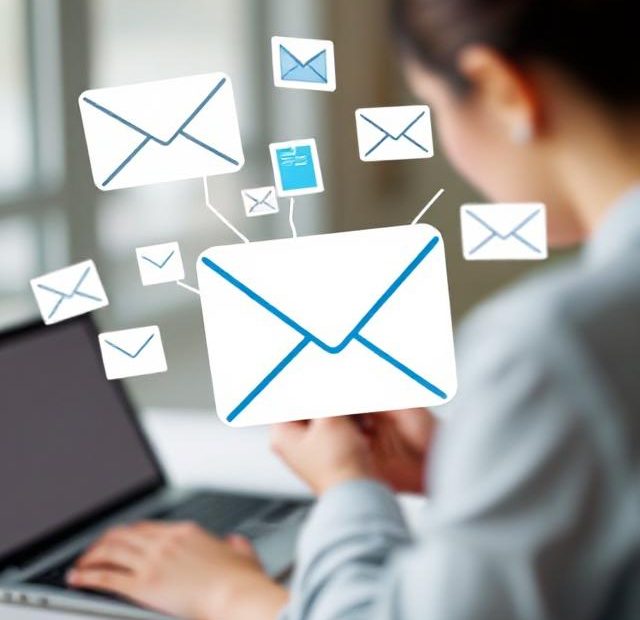In the fast-paced world of online shopping, email campaigns for eCommerce stores are a proven and cost-effective method to drive sales, retain customers, and create lasting brand loyalty. With over 4 billion daily email users globally, email marketing continues to offer an unmatched ROI — reportedly $40 for every $1 spent.
So, how do successful eCommerce brands leverage this powerful tool in 2025? Let’s explore the strategies, tools, and best practices that help online stores thrive through targeted, engaging, and automated email marketing campaigns.
Why Email Campaigns Matter in eCommerce
For eCommerce businesses, email is more than a communication tool — it’s a direct revenue driver. Here’s why email campaigns work so well:
-
Direct Access to Customers: Unlike social media algorithms, emails land straight in the inbox.
-
Personalization at Scale: Behavioral data allows highly tailored messages.
-
Cost-Effective: Low setup costs with high conversion potential.
-
Automation Capabilities: Run campaigns that work even while you sleep.
From abandoned cart recovery to post-purchase follow-ups, email campaigns for eCommerce stores keep your audience engaged at every stage of the customer journey.
Types of eCommerce Email Campaigns That Win
1. Welcome Emails
The welcome email sets the tone for your brand. It’s your chance to greet new subscribers, introduce your story, and provide value immediately.
What to include:
-
Warm greeting
-
Brand introduction
-
Signup bonus (e.g., 10% off)
-
Links to bestsellers
These emails have the highest open rate of any type — make your first impression count.
2. Abandoned Cart Emails
Roughly 70% of carts are abandoned. Recovering even a fraction can significantly boost revenue.
Tips for success:
-
Remind customers what they left behind
-
Offer limited-time discounts or free shipping
-
Create urgency with timers or low-stock alerts
A series of 2–3 reminders usually works best.
3. Product Recommendation Emails
Based on browsing history or past purchases, these emails suggest new items your customer is likely to love.
Effective techniques:
-
Use AI tools to personalize product feeds
-
Highlight trending items or complementary products
-
Include customer reviews or ratings
These campaigns often drive higher click-through and conversion rates.
4. Post-Purchase Follow-Up Emails
The sale doesn’t end at checkout. Keep customers engaged and coming back.
What to send:
-
Order confirmation and shipping updates
-
Product care tips or usage guides
-
Request for reviews or social shares
-
Cross-sell or upsell suggestions
Post-purchase emails build trust and encourage repeat business.
5. Seasonal and Promotional Campaigns
Black Friday, New Year’s, or even “Back to School” — timing your promotions with the right events boosts relevance.
How to stand out:
-
Use countdowns and urgency-based subject lines
-
Highlight exclusive offers
-
Include strong, clear CTAs
-
Segment based on purchase behavior
A/B testing subject lines and send times is key during high-traffic periods.
Personalization and Segmentation: The Winning Formula
Generic, one-size-fits-all emails are no longer effective. In 2025, eCommerce success comes from deep personalization and smart segmentation.
Segment your list by:
-
Location
-
Purchase frequency
-
Product interest
-
Average order value
-
Inactivity or re-engagement potential
Personalize by:
-
Using customer names
-
Recommending products based on behavior
-
Sending birthday or milestone discounts
According to industry studies, segmented campaigns can increase revenue by up to 760%.
Automation Tools That Drive Results
Modern eCommerce email platforms offer powerful automation that simplifies marketing while maximizing ROI. Popular platforms include:
-
Klaviyo – Best for Shopify and WooCommerce integration
-
Omnisend – Designed for automation-first campaigns
-
Mailchimp – Great for small-to-mid-sized stores
-
Drip – Focused on eCommerce personalization
Set up email flows like:
-
Abandoned cart series
-
Welcome series
-
Product browse follow-ups
-
VIP or loyalty sequences
These workflows save time and deliver consistent customer engagement.
Measuring Email Campaign Success
Tracking performance helps you adjust and optimize your strategy. Key metrics include:
-
Open Rate: Indicator of subject line effectiveness
-
Click-Through Rate (CTR): Measures engagement and content relevance
-
Conversion Rate: Direct link to revenue generation
-
Unsubscribe Rate: Signals content or frequency misalignment
-
Revenue per Email: Shows ROI for each campaign
Many platforms also offer heatmaps to show where users click within your emails.
Best Practices for 2025
To stand out in inboxes and avoid spam filters, follow these best practices:
-
Use mobile-responsive templates
-
Keep emails concise and visually clean
-
Test and optimize subject lines
-
Send consistently, but not too frequently
-
Always include unsubscribe links and comply with data laws
In 2025, consumer trust and relevance matter more than ever.
Final Thoughts
Email campaigns for eCommerce stores remain one of the most effective digital marketing tools, especially when done strategically. With smart automation, deep personalization, and customer-centric messaging, eCommerce businesses can convert browsers into buyers — and buyers into loyal brand advocates.
Whether you’re launching your first campaign or scaling your store, investing in the right email strategies will pay dividends in sales, retention, and long-term growth. Email isn’t dead — it’s evolving. And in 2025, it’s smarter, faster, and more profitable than ever before.
Also, you can learn more about Email Marketing Tips.. here.
